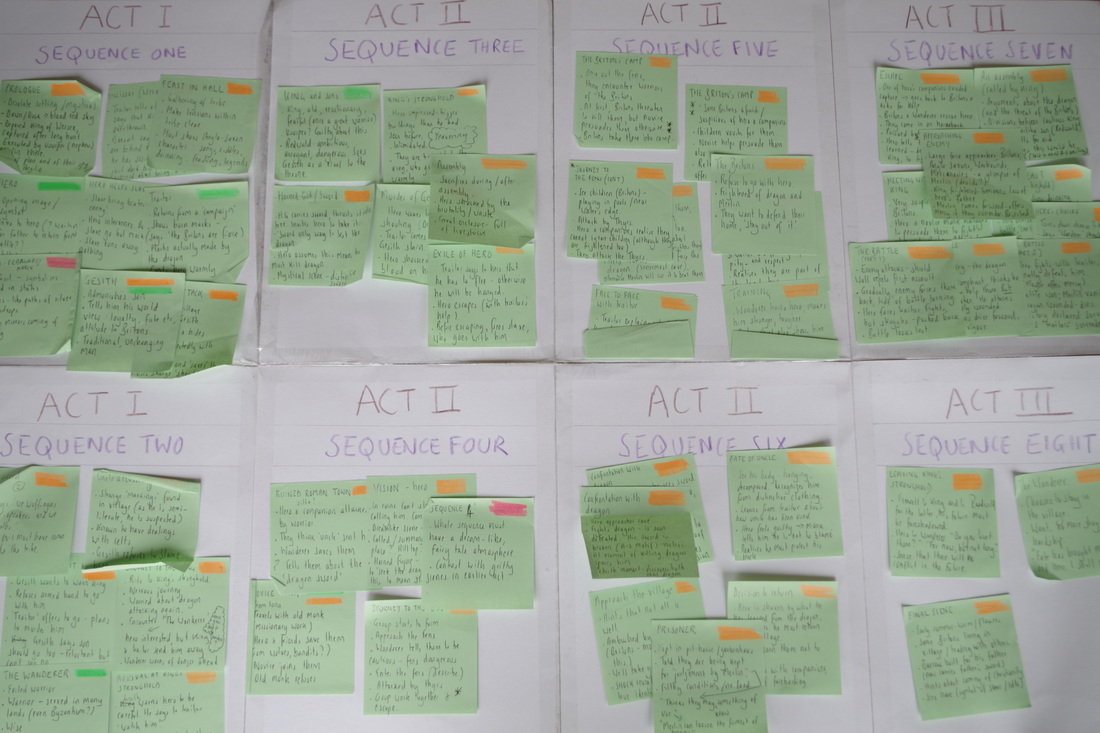|
Continuing my blog series detailing the writing of This Sacred Isle, I'll look during this post at planning for the novel. The picture above shows my ‘story planner’, which follows a template based upon the Monomyth, the Hero’s Journey, story structure. It is fair to say that the Hero’s Journey structure is not without its critics and often there is validity to their arguments (too general, too male-focused); but I look upon this as a building block, a first step in the construction of my narrative. My ‘story planner’ allows me to have a quick, high-level first pass at compiling the structure and rhythm of the story.
How does it work? Well, it is a very cheap, lo-fi tool! I print out the sections onto an A3 sheet and then simple add post-it notes (different colours for narrative points, characters, mood etc.) to the relevant sections to map out the plot. In time, you should end up with something like this (though maybe tidier). If you use this method, my advice is not to rush through it. Spend a few weeks building the structure and take time looking it, moving elements around. I think you’ll be surprised how quickly a narrative outline starts to form. I find it invaluable in the process of moving from a mass of ideas to an actual story. Now armed with a post-it festooned / smothered story planner for This Sacred Isle, I was now ready to move to the next stage, to more detailed planning for the novel. For this next stage, I used what I call my ‘treatment’ – a term borrowed, rather grandly, from Hollywood, where it describes a prose outline that is between the initial scene cards and the screenplay. Indeed, you could look at the story planner as the ‘scene cards’ and the first draft of your novel as the ‘screenplay’ to understand how the treatment fits into the process. My treatment for ‘This Sacred Isle’ ran to approximately 11,000 words. To summarise, this is what I included:
What are the advantages of compiling a treatment rather than simply steaming into the first draft? Well, I feel a treatment allows me to build a comprehensive plan of the novel, chocked full of detail – it is invaluable when writing the first draft (and beyond) as I have a document to refer back to. This is both a reassurance during the arduous process of writing a first draft, and a way of ensuring that early ideas are not missed. There is the danger that ideas noted in the treatment become ‘cast in stone’, and that early plans and thoughts are not challenged later. But this should not be an issue if you use the treatment as it should be: as a support tool and a method of beginning to drill down into the detail of your emerging novel. How do you plan your stories? Please share any thoughts or suggestions below.
0 Comments
Leave a Reply. |
Archives
October 2023
Categories
All
|

 RSS Feed
RSS Feed